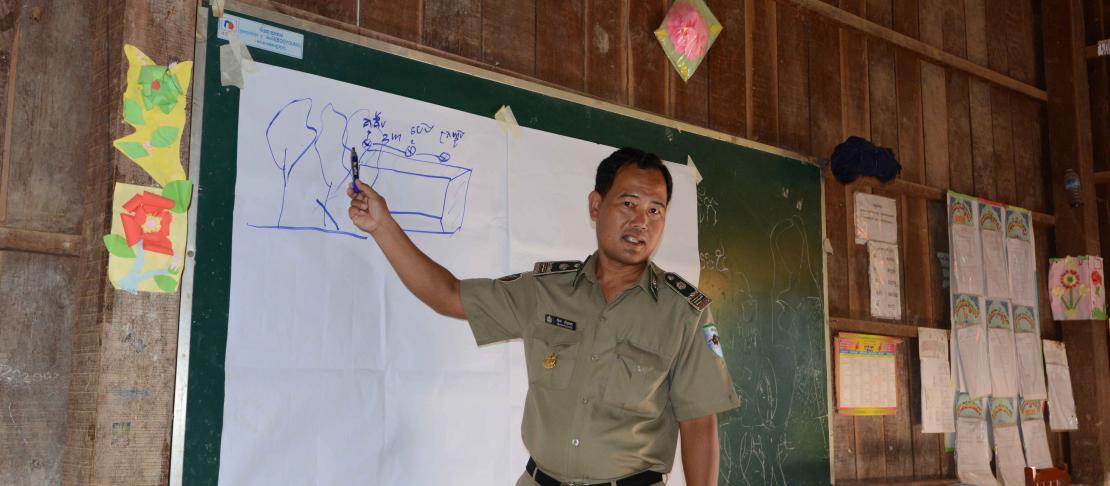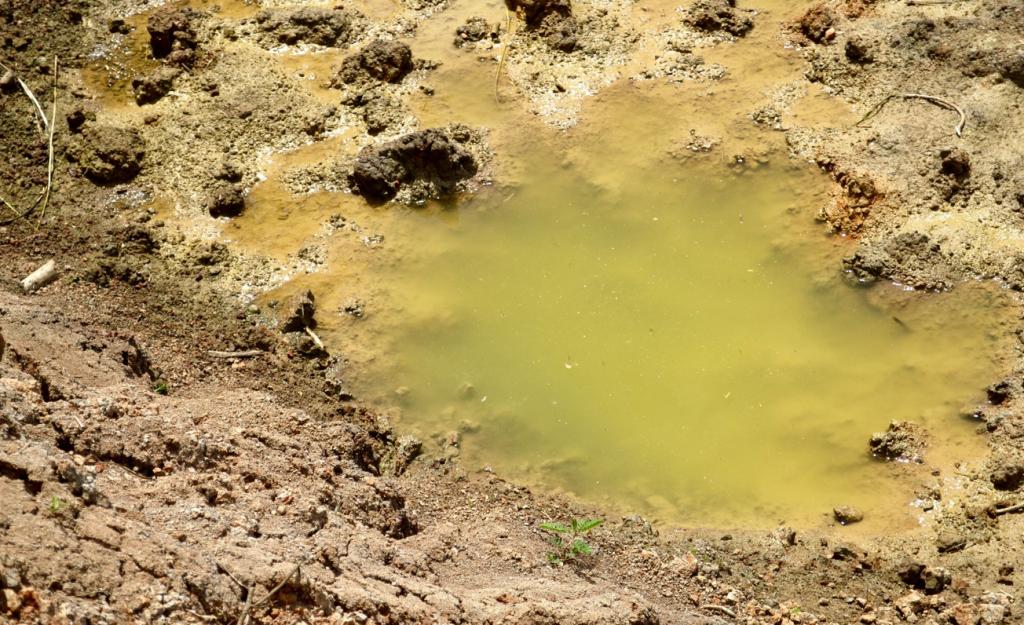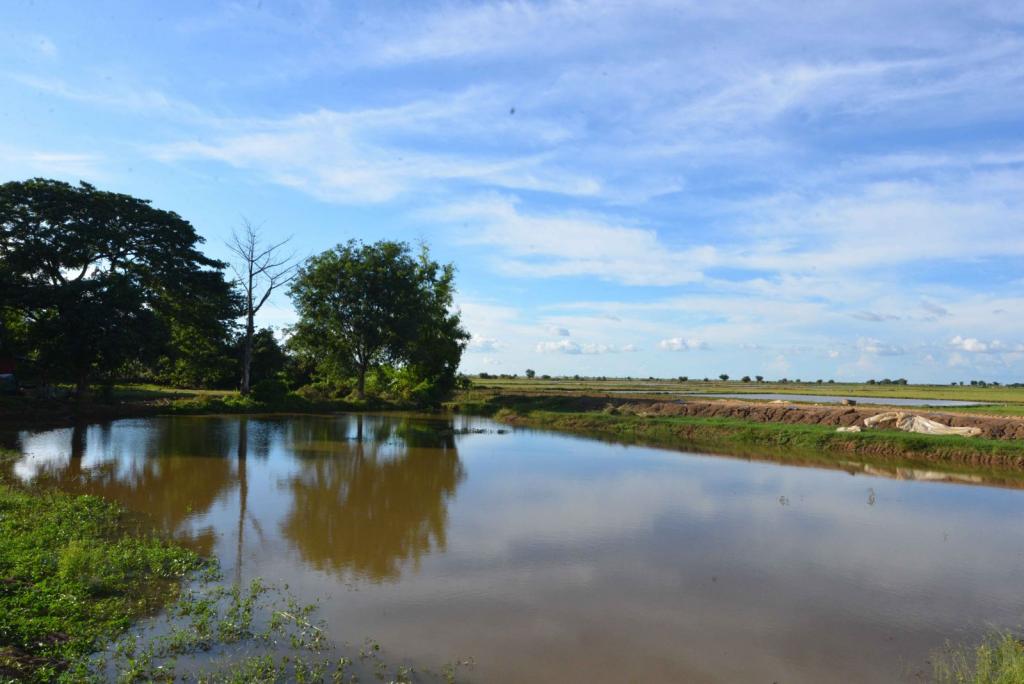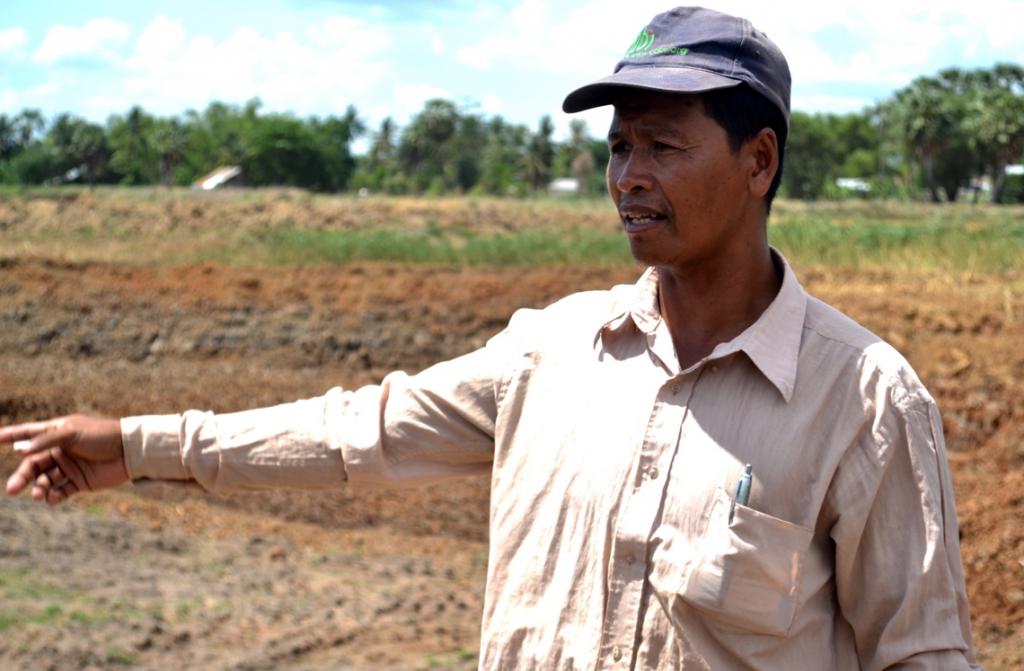Community pond restoration in Cambodia provides water for a hundred families

Local community members are working to address water management issues in Rohal Suong, Cambodia, through the restoration of two community ponds.
In rural villages in Cambodia, community ponds provide water for domestic use, livestock, irrigation and home gardens. In Rohal Suong, however, water from community ponds have reduced significantly. The ponds have become increasingly shallow, and extreme temperatures (40-41°C), particularly during the dry season of 2016, have aggravated the situation, according to the Ministry of Water Resources and Meteorology. When villagers need the water most, ponds have often completely desiccated.

The Boeung Voer pond, located on the border between Doung Mear village and Rohal Suong village, is almost dry partly due to extreme temperature. Communities need to learn proper water management to perpetuate the utility of this valuable water source. Photo: F. Emdin (WorldFish)
With support from the CGIAR Research Program on Climate Change, Agriculture and Food Security (CCAFS), the community people and village leaders have mobilized to rehabilitate two community ponds, which are important water sources in the village.

The water supply from the school pond in Rohal Suoung have been improved with the rehabilitation. More water have now become available to farming households in the village Photos (above and below): E. Dyna (WorldFish)

In April 2016, the commune and district authorities, as well as the provincial Fishery Administration Cantonment, approved the community pond rehabilitation. People and resources were mobilized to begin the restoration. Both ponds were dug wider and deeper and were left to be filled during the monsoon rain season. Then the rains came, later than usual, but were sufficient to fill the Boeung Voer pond with rainwater.
In addition to the wet season rains, floodwaters from the nearby Sangker River and the Tonle Sap great lake inundate the area. For 2016, however, the overland floodwater was greatly reduced, hence, not enough to fill the school pond. To adapt to this unexpected circumstance, the committee and village members decided to marshal their resources to pump rainwater from nearby paddy lands to store in the pond.
“Working together to plan and restore our ponds has brought our community closer together,” said Dol Hun, Chief of the School Association.
In November 2016, villagers planted trees and deep-rooting grasses around both ponds. The trees provide shade to the water and the surrounding land to reduce surface temperatures and subsequent loss of water through evaporation. In addition, the roots of the trees and grasses are meant to hold the soil in place, preventing surface erosion as well as the breakdown of the pond walls.

A community leader and farmer presents the community plans for the rehabilitation of Boeung Voer pond. The whole community helped in the efforts to restore the ponds. Photo: F. Emdin (WorldFish)
As Rohal Suong enters the next dry season, both ponds stand ready to provide much-needed water to about 100 families in the community for household consumption, livestock, vegetable gardens, and fish trap.
Read more
- News update: Cambodia Climate-Smart Village enhances livelihoods with better water management
- News update: Plant clinic established in Cambodia Climate-Smart Village to address crop pests
- News update: Cambodia Climate-Smart Village works to improve rice straw management practices
Eam Dyna is a researcher with WorldFish, working on the Climate-Smart Villages. Fiona Emdin is an intern with WorldFish.



